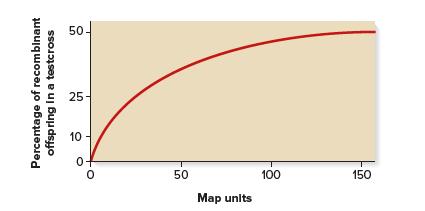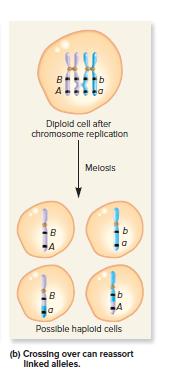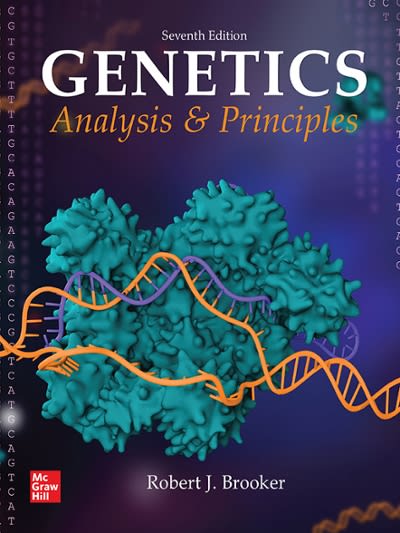As illustrated in Figure 6.9, a limit exists for the relationship between map distance and the percentage
Question:
As illustrated in Figure 6.9, a limit exists for the relationship between map distance and the percentage of recombinant offspring.Even though two genes on the same chromosome may be much more than 50 mu apart, a testcross is not expected to yield more than 50% recombinant offspring. You may be wondering why this is so. The answer lies in the pattern of multiple crossovers. At prophase of meiosis I, a single crossover in the region between two genes produces only 50% recombinant chromosomes (see Figure 6.2b).
Therefore, to exceed a 50% recombinant level, it would seem necessary to have multiple crossovers within a bivalent.Let’s suppose that two genes are far apart on the same chromosome.A testcross is made between a heterozygous individual, AaBb, and a homozygous individual, aabb. In the heterozygous individual, the dominant alleles (A and B) are linked on the same chromosome, and the recessive alleles (a and b) are linked on the same chromosome.What are all of the possible double crossovers (between two, three, or four chromatids)? What is the average number of recombinant offspring, assuming an equal probability of occurrence for all of the double crossovers?
Figure 6.9:

Figure 6.2b:

Step by Step Answer:






